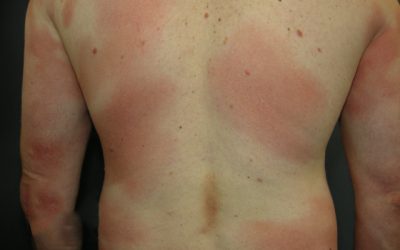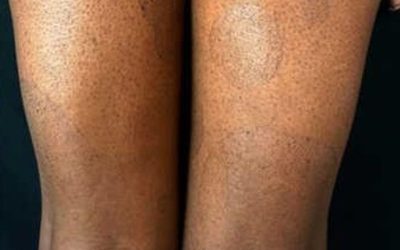Lyme disease
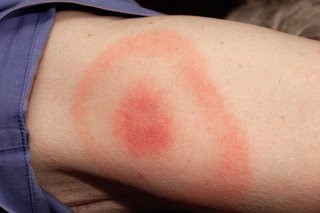
Lyme disease (borreliosis) contracted when an infected tick injects intestinal contents containing bacteria (Borrelia burgdorferi) into a wound while sucking blood. Untreated Lyme disease can damage not only the skin, but also the internal organs, joints and nervous system. The greatest risk of contracting Lyme disease is when the infected tick remains in the skin for 36-48 hours.
How is Lyme disease transmitted??
Lyme disease is spread by ixodid ticks. Both nymphs and adult ticks can infect humans. The risk increases for people who spend a lot of time in wooded, grassy areas.
The same tick can also be a carrier of other diseases (eg tick-borne encephalitis virus).
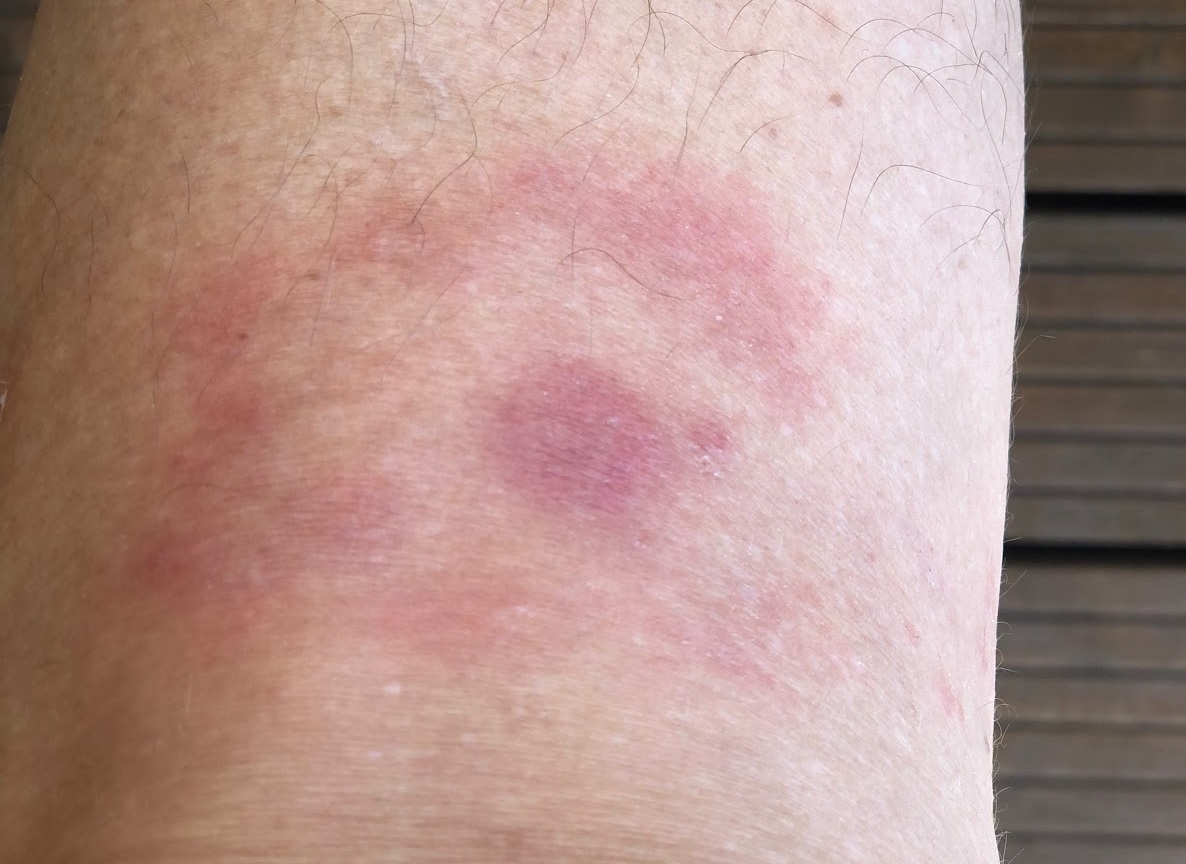
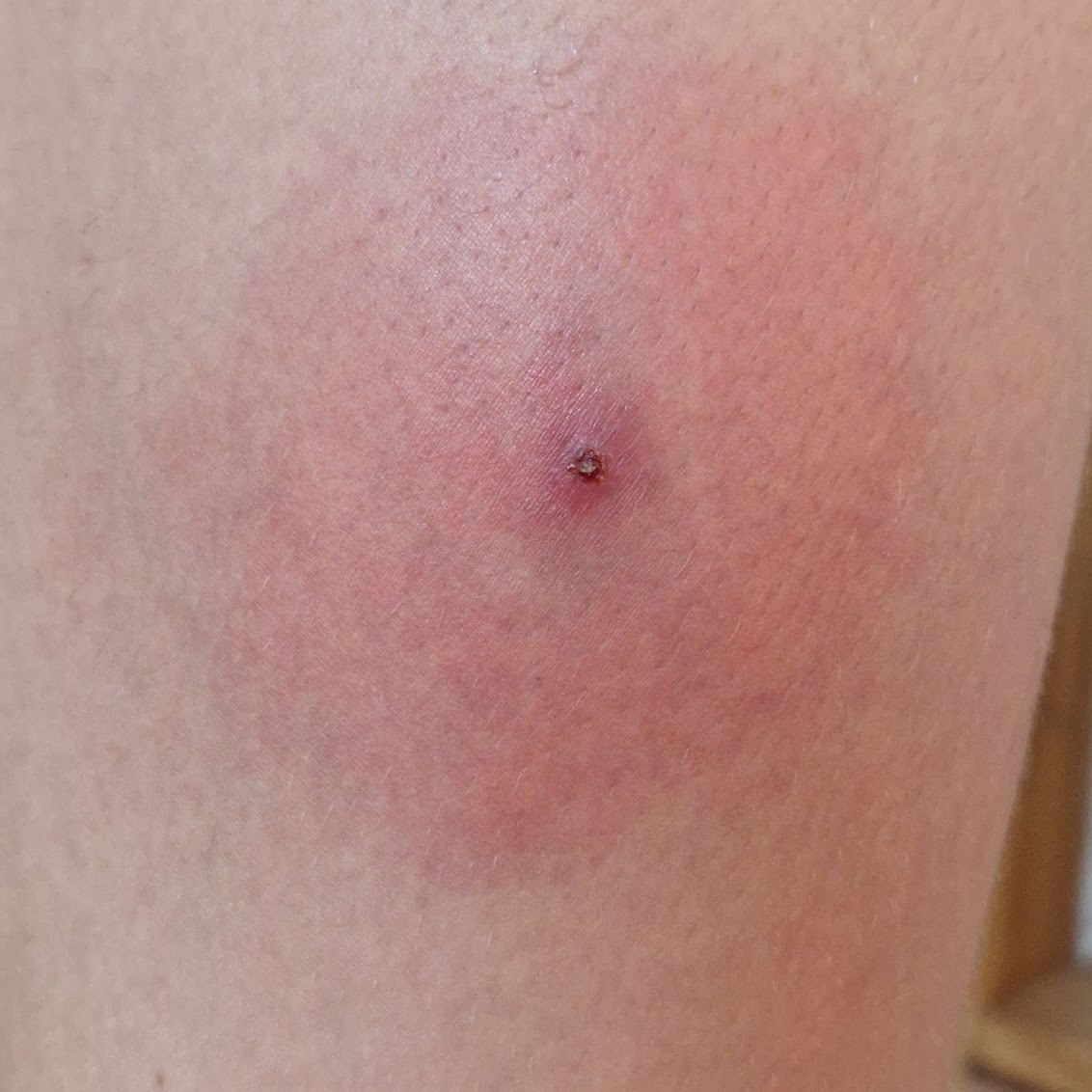
What are the symptoms of Lyme disease?
In the early stage of the disease, ring-shaped redness (erythema) appears at the site of tick bite after 1-4 weeks. The rash expands peripherally, the edges become brighter, and the center flashes, so the redness is also called erythema migrans. The rash may be larger than 5 cm in diameter. Erythema migrans is the most common clinical form of Lyme disease, occurring in about 85% of cases. In the area of redness, the skin is warmer and usually painless, no itching. Along with migrating erythema, there may be signs of a systemic infection: fever, weakness, muscle pains.
Without treatment in several weeks or months after Borrelia enters the body, damage to the nervous system (e.g. meningitis, encephalitis, temporary paralysis of one side of the face), heart (e.g. heart rhythm disorders – extrasystoles or atrioventricular block), joint damage (e.g. monoarthritis, oligoarthritis) or skin (e.g. multiple erythema migrans, chronic atrophic atrophic dermatitis or benign cutaneous lymphocytoma) rashes.
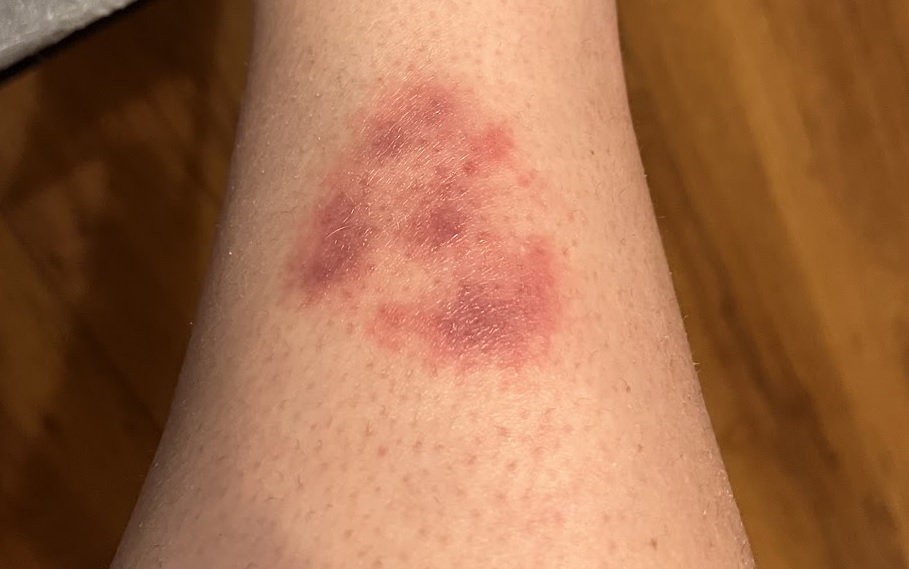
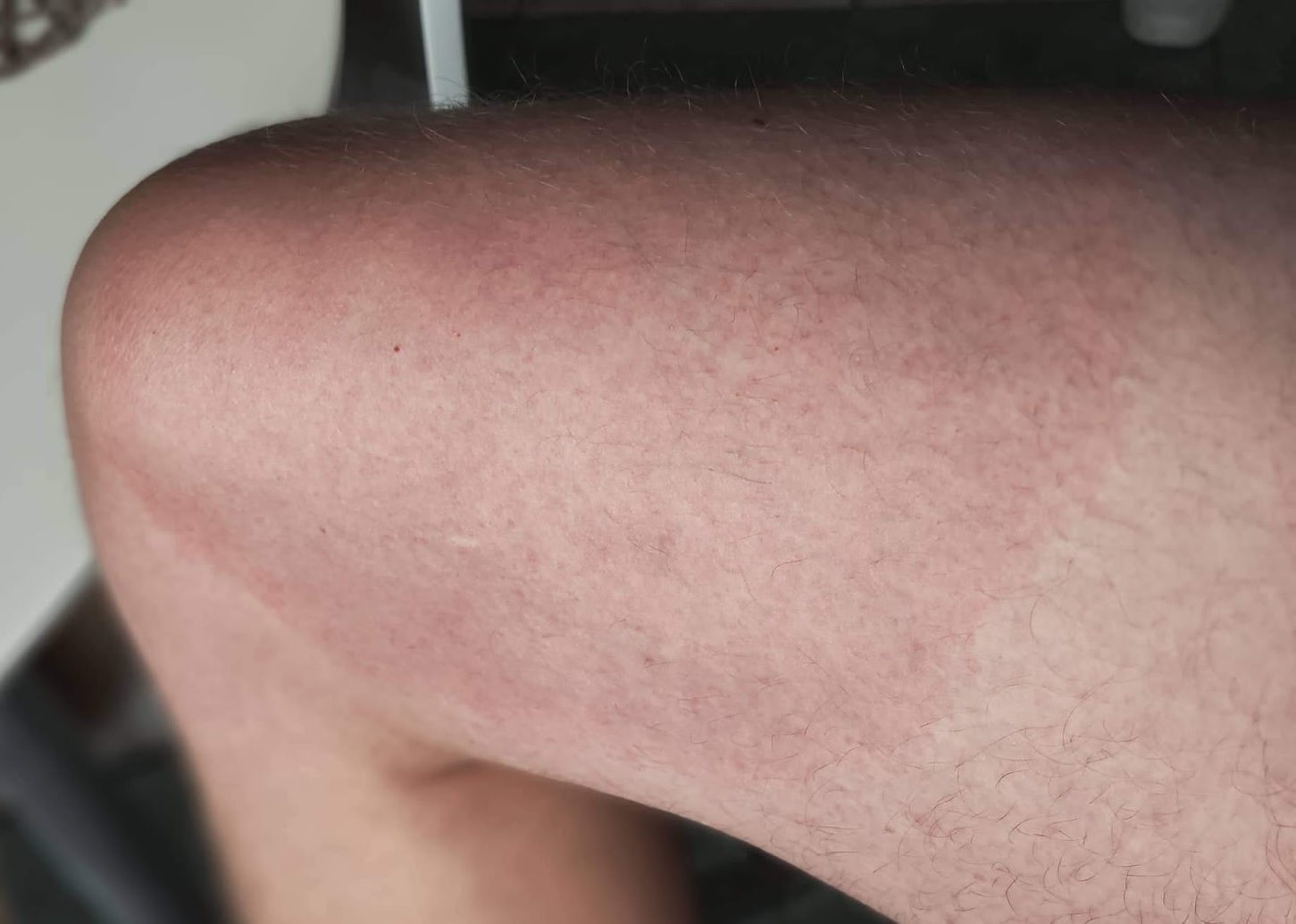
The rash of erythema migrans is determined only by clinical signs of the disease. It is not appropriate to look for Lyme disease antibodies during the rash, because more than 80% of patients have not yet formed them. In such a situation, treatment is started immediately, without a serological test. Serologic testing (eg, Lyme disease (Borrelia burgdorferi) IgM antibody and Lyme disease (Borrelia burgdorferi) IgG antibody) is recommended for individuals who have been ill for 4 weeks or more.
How is Lyme disease treated?
Lyme disease is treated with antibiotics. The effectiveness of the treatment depends on the early diagnosis of the disease. After contracting Lyme disease, immunity is not acquired, and a person can become infected with the disease repeatedly.
Can you get a Lyme disease vaccine?
There is no vaccine against Lyme disease.
• When going out into nature, we recommend avoiding tall grass and bushes, walk on paths.
• Dress in light, closed clothes and cover your head with a well-fitting hat.
• Use tick repellants.
• Don’t forget to check your clothes and body when you come back from a walk.
What to do if you see a tick that has been sucked in?
If a tick is found, it must be removed as soon as possible. We recommend removing the tick with thin tweezers. Do not apply any ointments, solutions or disinfectants around the tick. The tick should be grasped in the area between the abdomen and the bitten part and pulled out whole, not in parts. The tick should be pulled vertically, without rotating around its axis. Do not squeeze the abdomen of the tick, as this increases the risk of contracting Lyme disease. After extraction, the area should be disinfected and observed for at least a month. If redness of the skin at the site of tick bite, fever, headache occurs during this period, it is necessary to consult a dermatovenerologist, infectious disease doctor or family doctor as soon as possible.
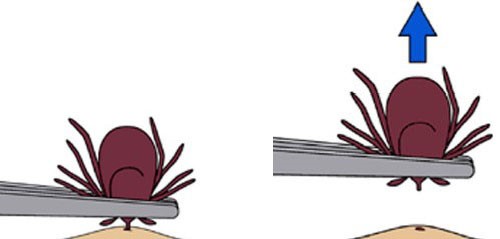

Peeling skin syndrome
Peeling skin syndrome is a genetic disorder characterized by constant peeling of the skin. The disease appears from birth or in the first year of life
lasts a lifetime
Mycosis Fungoides
The most common primary skin T-cell lymphoma (cancer of the blood). Mycosis Fungoides is characterized by three main stages, several of which may exist at the same time
Paraneoplastic dermatological manifestation of gastrointestinal malignancies
rare disorders resulting from the immune system’s response to a cancerous process (neoplasia) in the body. Gastrointestinal neoplasms more often cause paraneoplastic syndromes affecting the skin.


